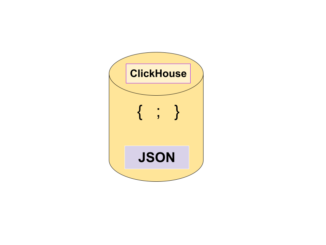Introduction
Data is an important resource that needs to be used to make a difference in the business world make correct and consistent decisions and increase success today, as it was in the past. Therefore, companies want to use data and analytics processes more effectively to design more efficient and better quality products, improve processes, and increase profitability. However, this is a difficult process due to technological differences, rapidly changing business requirements, and distributed data sources.
To improve this inefficiency, it is necessary to redesign data analytics to increase stability, speed, and quality. DataOps has emerged to meet this requirement. DataOps aims to provide a solution by combining a process-oriented perspective on data with the automation and methods of agile software engineering in order to standardize quality and rapid renewal and a culture of continuous improvement.
Data Analytics Complexity & the Need for DataOps
The use of data analytics in company growth strategies is increasing day by day. Data analytics teams often use analytics to give the company a competitive advantage over other companies. One of the biggest problems here is that despite the rapid change in customer and market opportunities, analytical calculations are slow and resources are limited. User expectations and the information provided by data analysts may not meet each other. This causes dissatisfaction on the user’s side and failure to provide the desired benefit from the data.
User needs are constantly changing due to the nature of the business. The answers provided by the analytical team on issues that require a quick response are insufficient because users are constantly coming up with new requests. This puts the data analytics team in a difficult situation because users are not data experts and often can’t even decide what they want until they see the results. So much so that they often do not even know what they need next week. Of course, this is not the fault of the user. It is characteristic of markets with constantly changing opportunities.
DataOps emerges from the understanding that separating production-ready data from operations hinders quality and agility. The need for DataOps is due to the significant increase in data consumption rate and size in recent years.
Many large companies are unprepared for modern data management applications due to their technical capabilities that are insufficient to reflect rapid changes such as ETL (Extract Transform Load) and MDM (Master Data Management) to the system. At this point, the necessity for companies to use data to make fast and consistent decisions has revealed DataOps. DataOps is not only about technological infrastructure and processes, but also about regulating people’s relationships with data.
The main components of DataOps are:
- Automation
- Free and Open Source Software
- Best Available and Functional Technologies
- Tracking Data Lineage and Provenance
- Integrate Data With Determinism and Probability
- Federated and Aggregated Data
Conclusion
DataOps is a set of practices, processes, and technologies that combines an integrated and process-oriented perspective on data with automation and methods from agile software engineering to improve quality, speed, and collaboration and promote a culture of continuous improvement. [DataOps – Towards a Definition]
DataOps focuses on improving business value by accelerating the time to market of applications. Since the biggest bottleneck in data-intensive applications is access to data, the purpose of DataOps applications is to overcome this bottleneck and instead provide self-service and faster data delivery.
In this research, it has been shown that DataOps is not a specific method or tool, but a way of culture that should be developed using organizational and technological infrastructures.
In conclusion, at ChistaDATA we thrive on making DataOps less complex by developing roles, processes, and plans for our customers with the in-depth knowledge and industry experience that our teams acquired over the years. Thus, we aim to provide a way to reduce errors and minimize the cycle time required to develop an analytical environment.
To read more about ChistaDATA Cloud for ClickHouse, please read the following articles:


